Digital Poster
Kidney MRI Updates
ISMRM & ISMRT Annual Meeting & Exhibition • 10-15 May 2025 • Honolulu, Hawai'i

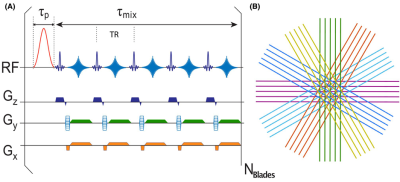 |
Computer Number: 129
2703. Free-breathing
abdominal CEST imaging at 3T with a steady-state MultiVane MRI
acquisition
S. Ma, F. Song, Z. Liao, P. Luo, Q. Wang, X. Zhang, N.
Zheng, G. Chen, Z. Li
Tongji Hospital Tongji Medical College, Huazhong University of Science and Technology, Wuhan, China
Impact: This study facilitates non-invasive,
motion-corrected free-breathing CEST imaging, enhancing
abdominal imaging for liver and kidney diagnostics. By
eliminating breath-hold limitations, it supports broader
metabolic studies, potentially advancing clinical
applications and enabling new research into disease
biomarkers and molecular changes.
|
|
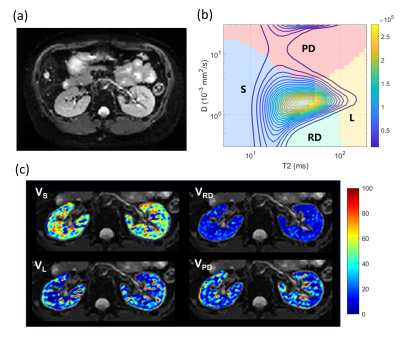 |
Computer Number: 130
2704. Identifying
renal intra-voxel compartment based on the diffusion-relaxation
profiles and their correlation to pathology
W. Hu, F. Liu, T. Yang, Y. Dai, Y. Zhou
Renji Hospital, School of Medicine, Shanghai Jiao Tong University, Shanghai, China
Impact: This explorative study raised a new spectral
segmentation strategy of DR-CSI based on post-hoc
correlation to pathology, suggesting four compartments with
specific diffusion and relaxation properties. The findings
provide insights for further research on renal DR-CSI.
|
|
 |
Computer Number: 131
2705. Quality
Control Pipeline for MRI Annotations of Polycystic Kidneys
C. Zhu, U. Satter, V. Bazojoo, H. Dev, Y. Kim, Z. Hu, X. He,
M. Prince
Weill Cornell Medicine, New York City, United States
Impact: This quality control pipeline with open-source
polycystic kidney segmentations aims to enhance future
public segmentation models, benefiting ADPKD patients,
clinicians, and researchers. The segmentation quality
assessment also encourages establishing reporting standards
for open-source segmentation datasets.
|
|
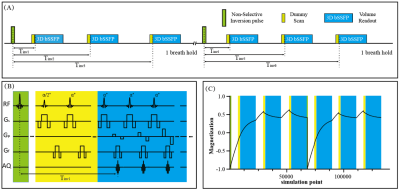 |
Computer Number: 132
2706. Three-dimensional
T1 mapping for whole renal MRI by multiple inversion-time
samplings look-locker sequence (mTI-LL)
w. zhang, Z. Chen, Q. Tao, Y. Zhang, Y. Xu, Y. Feng
School of Biomedical Engineering, Southern Medical University, GuangZhou, China
Impact: The
mTI-LL technique showed great potential for clinical
applications,it appropriate for 3D T1 mapping
with whole-kidney coverage and high-resolution.
|
|
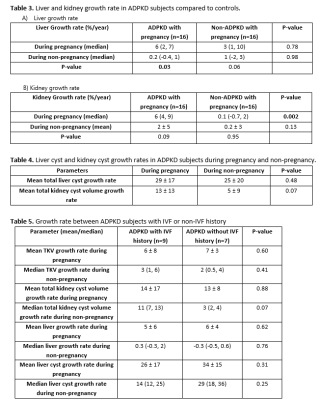 |
Computer Number: 133
2707. Effect
of Pregnancy on MRI measures of Kidney and Liver Cyst Growth
Rates in Autosomal Dominant Polycystic Kidney Disease (ADPKD)
V. Bazojoo, G. Lo, L. Malha, J. Blumenfeld, J. Chevalier, A.
Sharbatdaran, H. Dev, S. Raza, Z. Hu, V. Davoudi, C. Zhu, X.
He, Y. Wang, M. Chookhachizadeh Moghadam, U. Sattar, M.
Prince
Weill Cornell Medicine, New York, United States
Impact: Female ADPKD patient should consider the risk of
increase kidney growth prior to pregnancy.
|
|
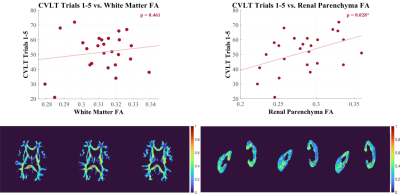 |
Computer Number: 134
2708. Kidney
Microstructure Predicts Poor Cognitive Function in Healthy
Racially/Ethnically Diverse Older Adults
E. Powell, N. Ortega, A. Hamlin, V. Leyva, A. Clark, A. Bush
University of Texas at Austin, Austin, United States
Impact: Unraveling the link between diseases of the
brain and kidneys will allow better management and improved
quality of life for those afflicted. Our finding that renal
microstructure predicts cognition may help illuminate new
mechanisms of ADRD.
|
|
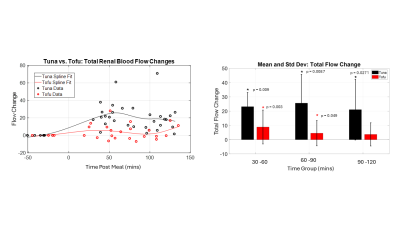 |
Computer Number: 135
2709. Multiparametric
MRI Evaluation of Renal Functional Reserve in Response to Oral
Protein Loading
C. Margain, A. Bush
University of Texas at Austin, Austin, United States
Impact: This non-invasive MRI renal stress test provides
spatially resolved assessment of functional renal reserve,
opening new possibilities for imaging diagnostic evaluations
of the kidney. Future work should explore renal reserve
evaluation in clinical and subclinical kidney disease
populations.
|
|
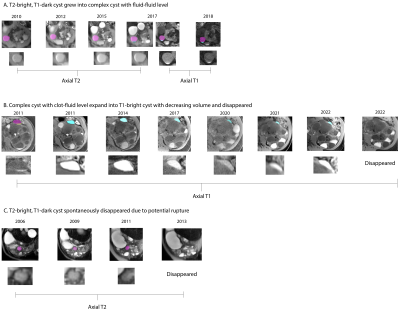 |
Computer Number: 136
2710. Natural
history of simple T2-bright and complex T1-bright and diffusion
restricting cysts in ADPKD
C. Li, Z. Hu, M. Prince
Weill Cornell Medicine, New York, United States
Impact: This study investigated the natural history of
cysts in ADPKD, establishing a model that characterizes
ADPKD cyst growth, and shows the feasibility of staging
ADPKD cysts using their MRI appearance.
|
|
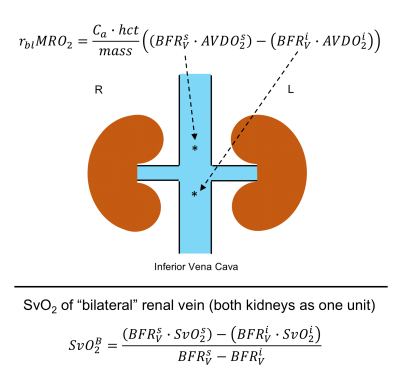 |
Computer Number: 137
2711. Quantification
of bilateral renal metabolism in one minute with dual-band
K-MOTIVE during free-breathing: a preliminary study
R. Deshpande, M. Deshpande, N. Kamona, M. Langham, F. Wehrli
University of Pennsylvania, Philadelphia, United States
Impact: MRI-methods to evaluate renal metabolism may be
limited by difficulty with identifying individual kidney’s
vasculature and breath-holds. Here, a free-breathing
approach is implemented to quantify metabolism of both
kidneys by imaging the (larger) inferior-vena-cava. These
aspects may facilitate clinical translation.
|
|
|
Computer Number: 138
2712. Quantitative
susceptibility mapping as a biomarker of hemorrhage and renal
function decline in autosomal dominant polycystic kidney disease
A. Dimov, Z. Hu, H. Dev, M. Prince, Y. Wang
Weill Cornell Medicine, New York, United States
Impact: Accurate identification of patients at greater
risk of rapid disease progression for optimal targeted drug
intervention (tolvaptan), improving patient’squality of life
by minimizing exposure to adverse side effects associated
with the life-long treatment such aspolyuria, pollakiuria
polydipsia, and drug’s hepatotoxicity.
|
||
 |
Computer Number: 139
2713. Fat-corrected
APTw/CEST-MRI with timed breathing for renal applications
J. Keupp, X. Wang, I. Dimitrov, H. Eggers, E. Vinogradov
Philips Innovative Technologies, Hamburg, Germany
Impact: Enable CEST applications in the kidney with low
artifact level from fat.
|
|
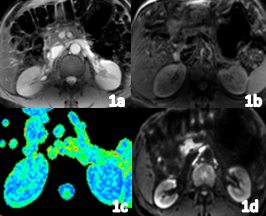 |
Computer Number: 140
2714. The
value of DTI and T1maping sequences in evaluating the degree of
fibrosis in chronic kidney disease
H. Zhang, Y. Ju, R. Luo, A. Liu
the First Affiliated Hospital of Dalian Medical University, Dalian, China
Impact: In this study, correlation analysis of DTI
sequence and T1mapping sequence with renal pathological
fibrosis indexes was performed to clarify their evaluation
effect on renal fibrosis and prognostic ability of CKD
progression.
|
The International Society for Magnetic Resonance in Medicine is accredited by the Accreditation Council for Continuing Medical Education to provide continuing medical education for physicians.